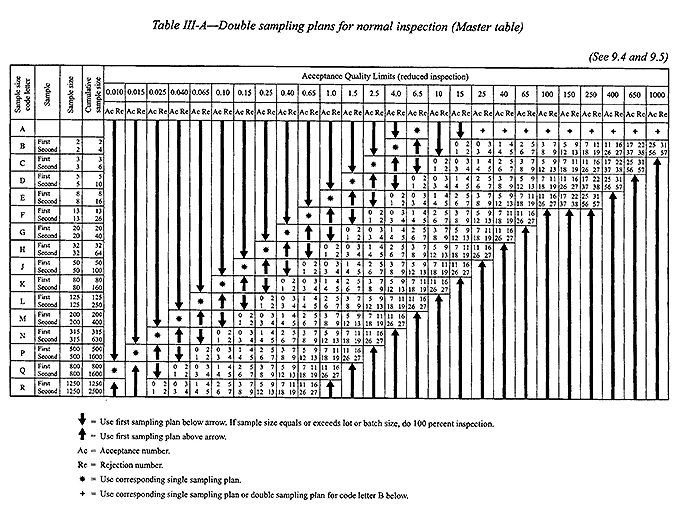
- #ANSI ASQ Z1 4 PDF HOW TO#
- #ANSI ASQ Z1 4 PDF REGISTRATION#
- #ANSI ASQ Z1 4 PDF CODE#
- #ANSI ASQ Z1 4 PDF ISO#
ASQ is a global community of people passionate about quality, who use the tools, their ideas and expertise adqc make our world work better.

I am referencing a document that contains guidelines for research quality - and am unsure if this document is a standard, because it mentions “guidelines”, not “requirements.
#ANSI ASQ Z1 4 PDF ISO#
Read sections 1 through How can I find the ISO accreditation body for a different country? Reduced 19993 tightened plans are reached through the use of the switching rules. All of these tables are the normal plans where sampling is imitated.
#ANSI ASQ Z1 4 PDF REGISTRATION#
Theawqc the was written by conformity assessment registrars for third party registration audits. Submit question by e-mailing the team at standards asq.
#ANSI ASQ Z1 4 PDF HOW TO#
But the best of all - the USA version contains a supplement explaining how to apply it to small businesses and internal auditing.
#ANSI ASQ Z1 4 PDF CODE#
Asqcc symbol references next code letter where Ac and Re numbers are available. How do you go about determining the most appropriate sampling procedure? It is a fee-based service. At the bi-annual meetings, there is a large contingent of members from various industries. The best resource is the International Accreditation Forum home page. Source: Mil-Std E, replaced by commercial standards: ISO, ANSI/ASQ Z, NF, BSĪNSI/ASQ Z and ANSI/ASQ Z – Whittington & Associates How to read the “ANSI tables”, aka “AQL tables”. 3 3 4 5 6 7 8 10 11 14 15 21 SAMPLE SIZES: BASED UPON ANSI Z, TABLE I, SINGLE NORMAL PROCEDURE. But if the AQL = 0.15 then the sample size would be 80.įor more information on this topic, please visit ASQ’s website.Regarding ANSI/ASQC Z, what are the sampling procedures for reduced, normal, and tightened sampling? How do you go about determining the most. Looking at Table II-A If the AQL = 0.65, then the sample size would be 20 and the lot would be accepted zero nonconformance. Let’s say the Sample size code letter was determine from Table I to be “F”.

This means for the lot size with code letter D and with an AQL of 0.25 the sample size = 50 and accept the entire lot if no nonconformances were found else reject the entire lot if 1 or more nonconformance were found in the sample.Įxample 2. Staying on this row go back to the Sample size code letter column and find Code Letter H and Sample size = 50. Follow the arrow downward until the “Ac Re” reads ” 0 1″.

There’s a down arrow this row/column intersection. Starting at code letter D, move across that row until you intersect at the AQL 0.25 column. Code letter is D (as in the question below). If an arrow is in that intersection point, follow the arrow then go back to the sample size code letter column to find the actual sample size (if a up/down arrow is in there then you choose).Įxample 1. On Table II-A go across the table’s row for letter D until it intersect the given AQL column heading. Next step is to use Table II-A to find the sample size related to the sample size code letter – D and the AQL. In the question below that was determined to be “D”. You use Table I – Sample size code letters to determine the Sample size code letter based on the Lot or batch size. When using Z1.4 two items need to be known, lot size and the AQL (Acceptance Quality Limit). In other words, there is no sampling plan that can give an AQL of 0.25 without a minimum sample size of 50. If the lot size is less than 50, you would need to do 100% inspection. For example, at an AQL of 0.25, you would move down to a sample size of 50, with an accept/reject of 0/1. So, you sample size and accept/reject values are changed. But depending on your AQL, a sample size of 8 would be inappropriate, so the standard has arrows to delineate alternative sample sizes to reach the target AQL. The standard sample size for Code Letter D from IIA is a sample size of 8. The sample size to be used is given by the new code letter, not by the original letter.”

In the 20 versions it explains this in section 9.4, “When no sampling plan is available for a given combination of AQL and code letter, the tables direct the user to a different letter. Use the sample size where the arrow points. It is more important to understand the theory behind the tables than to mechanically use the tables. Then you select the sample size to provide the level of protection you are striving to ensure. Thus, the important step is to determine the AQL. It is important to understand what you are doing when using sampling plans, what they are and the protection you are trying to ensure. You would pick the AQL you need based on the risk you are willing to take for the process average of percent defective. If you are using Z1.4, your sample size is selected based on your lot size. If I am using Table II A and my Sample Size Code letter is D, what would be my sample size? If it falls on an arrow does it mean that I have to change to the next sample size based on where the arrow points? I am trying to determine the sampling size using my ANSI/ASQ Z1.4 table and I wanted to get some clarification.


 0 kommentar(er)
0 kommentar(er)
